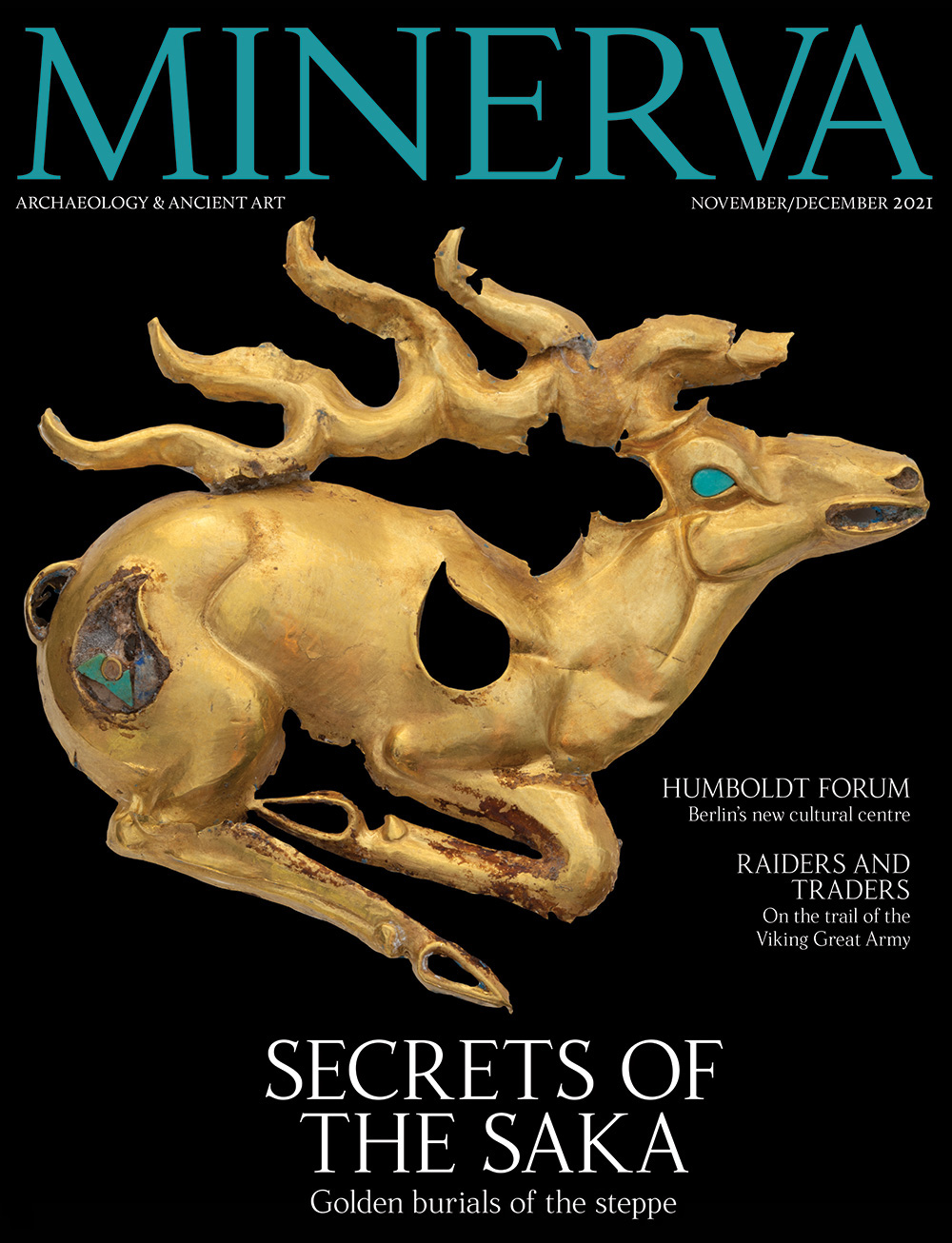Nov / Dec 2021

In 2018, archaeologists discovered the intact burial of a teenage archer of the Saka people in eastern Kazakhstan. Buried with him were golden weapon-cases and ornaments with dynamic depictions of animals, among them the spectacular stag on our cover. They left behind no histories of themselves, so these remarkable finds – and those from other elite Saka burial mounds – provide valuable insights into their world.

As the discoveries go on view in a new exhibition in Cambridge, its curators Rebecca Roberts and Saltanat Amir explore what Saka art, much of it in the pan-Scythian animal style, can tell us about these Iron Age people of the Eurasian steppe.

For our next feature, we turn to one of my favourite artists: Peter Paul Rubens. His familiarity with ancient sources enabled him to produce large dramatic canvases of unusual mythological scenes, a way of showing off his erudition, which was something he also did in his many letters. We speak to Anne Woollett to find out more about his involvement in antiquarian activities in 17th-century Europe, and the ways in which he brought the ancient world to life.

While the invasion of England by the Viking Great Army in the 9th century AD had dramatic repercussions – leading to the growth of towns and industry, and to seismic shifts in power politics – contemporary sources tell us little about it. Recent archaeological finds are filling in the gaps, revealing the scale of the Great Army at its various camps and their impact, as Dawn M Hadley and Julian D Richards write.

In Rome, the Mausoleum of Augustus has reopened to visitors. Though it was built as an impressive tomb for Rome’s first emperor, it has also seen life as a quarry, a hanging garden, and even an amphitheatre. Dalu Jones explores 20th- and 21st-century efforts to revitalise Augustus’ tomb.

Another site that has had a long history of reuse is the plot of land that Berlin’s new cultural complex, the Humboldt Forum, sits on. For our final feature, we speak to Alfred Hagemann to learn about the medieval monastery, Baroque palace, and East German cultural and political centre that stood on this central site – before taking a look at some of the displays at the newly opened museums in the rebuilt palace.





